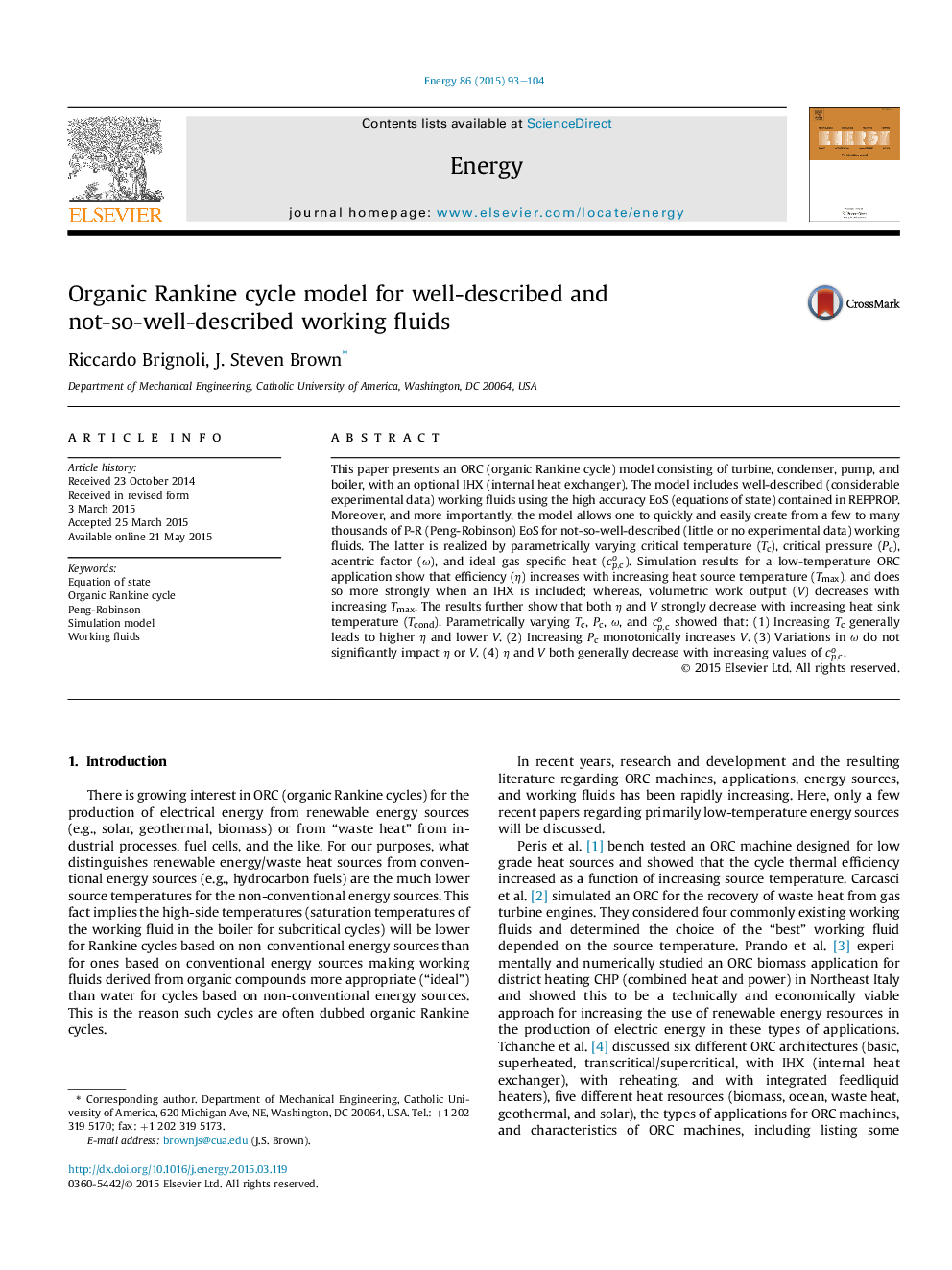| Article ID | Journal | Published Year | Pages | File Type |
|---|---|---|---|---|
| 1732220 | Energy | 2015 | 12 Pages |
•A thermodynamically-based ORC simulation model is presented.•Allows for creation of Peng-Robinson EoS for both real and theoretical fluids.•Allows for simulations not-so-well-described (Peng-Robinson) working fluids.•Allows for simulation for well-described working fluids.•Allows for easy, fast and inexpensive screening of many thousands of fluids.
This paper presents an ORC (organic Rankine cycle) model consisting of turbine, condenser, pump, and boiler, with an optional IHX (internal heat exchanger). The model includes well-described (considerable experimental data) working fluids using the high accuracy EoS (equations of state) contained in REFPROP. Moreover, and more importantly, the model allows one to quickly and easily create from a few to many thousands of P-R (Peng-Robinson) EoS for not-so-well-described (little or no experimental data) working fluids. The latter is realized by parametrically varying critical temperature (Tc), critical pressure (Pc), acentric factor (ω ), and ideal gas specific heat (cp,co). Simulation results for a low-temperature ORC application show that efficiency (η) increases with increasing heat source temperature (Tmax), and does so more strongly when an IHX is included; whereas, volumetric work output (V) decreases with increasing Tmax. The results further show that both η and V strongly decrease with increasing heat sink temperature (Tcond). Parametrically varying Tc, Pc, ω , and cp,co showed that: (1) Increasing Tc generally leads to higher η and lower V. (2) Increasing Pc monotonically increases V. (3) Variations in ω do not significantly impact η or V. (4) η and V both generally decrease with increasing values of cp,co.
